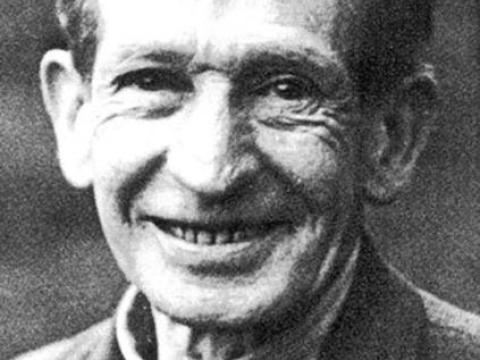A short biography of James Harragan, anarchist shoemaker and link between the old Chartist movement and the newly emergent anarchist movement.
“To have known him and done propaganda with him was an adventure in itself”. Mat Kavanagh, 1945
James Harragan (his own spelling of his name, but often written as Harrigan in other texts) worked as a “tramp” or itinerant shoemaker as well as peddling various saleable articles. Like Dan Chatterton he was one of the links to the old Chartist movement and the emergent anarchist movement. As an apprentice shoemaker, he had worked with one of the Cato Street conspirators who may have inspired him with revolutionary ideas' (this may have been Richard Tidd or John Brunt, both radical shoemakers and followers of the proto-anarchist Thomas Spence). Harragan had been a member of the English Section of the First International and had once been chairman of its Annual Convention. In Mat Kavanagh’s words: “ he fought the armchair revolutionaries of those days, as he was to do later in the 80s”. He was to write in October 1885 : 'old stagers know well enough that I have consistency and persistently advocated and defended the principles of Anarchy from the time I left the old "International", exactly at the same time that Michael Bakounine left it and for the same reason …'.
He became an open air speaker at an early age and “probably deserves the distinction of being the first open air propagandist of avowed Anarchism in England.” (Kavanagh). Whilst he may not have originated the idea of the stay-in strike, which had been developed by William Benbow in the 1830s, he certainly popularized it by attending trades union meetings and raising the subject. He claimed to have converted Ben Tillett, later a leader of the Dockers' Union, to socialism when he met him during the “Tea Sessions” when shoemakers left their work to open or close tea chests at the Docks. He said there was nothing he regretted more for he hated the political charlatans who used the workers' movement to make a career for themselves. Harragan with abilities far beyond those smooth-tongued adventurers, remained a worker, a rebel in society.
In 1885 he wrote for Henry Seymour’s The Anarchist and sold it at meetings. He “had run into accusations from Charles Mowbray that he was a police spy. How this came about is almost impossible to discover - Harrigan was of the opinion that it was jealousy of someone pushing papers other than the Commonweal at Socialist League meetings. (There had, incidentally, been complaints from Hyndman that S.D.F. paper-sellers were being harassed at League meetings.) The incident is worth mentioning because it shows that an awareness of the activity of police spies already existed in socialist bodies. It also shows that Mowbray, who was later to declare himself an Anarchist, at this stage remained like most of the Socialist League, an anti-parliamentary revolutionary socialist. His accusation of Harrigan, however, might have had something to do with the latter's style of agitation. At a large meeting to which he lectured on Anarchism in South London in November 1885, Harrigan, in an aside while telling about a no-rent campaign, advised his audience ' by way of a pastime they should amuse themselves by poisoning off the landlords'.” John Quail, The Slow Burning Fuse.
Later, in 1895 he supported the Torch: A Revolutionary Journal of Anarchist Communism produced by the young Rossetti sisters Olivia and Helen.
In their A Girl Among the Anarchists, written under the name of Isabel Meredith, they refer to Harragan under the fictionalized name of M’Dermott. (Note the class prejudice of these two well brought up young ladies). “He was a very small man, certainly not more than five feet high, thin and wiry, with grey hair and moustache, but otherwise clean-shaven. His features were unusually expressive and mobile from his somewhat scornful mouth to his deep-set, observant eyes, and clearly denoted the absence of the stolid Saxon strain in his blood. His accent too, though not that of an educated man, was quite free from the hateful Cockney twang. His dress was as spare as his figure, but though well worn there was something spruce and trim about his whole demeanour which indicated that he was not totally indifferent to the impression he created on others”. It appears he was fond of Shakespearian recitation, often bursting into soliloquy whilst at his trade of shoe-maker. He encouraged the Rossettis to maintain the Torch. One of his favourite sayings was:
“You cannot have revolution without revolutionists.”
NICK HEATH




Comments